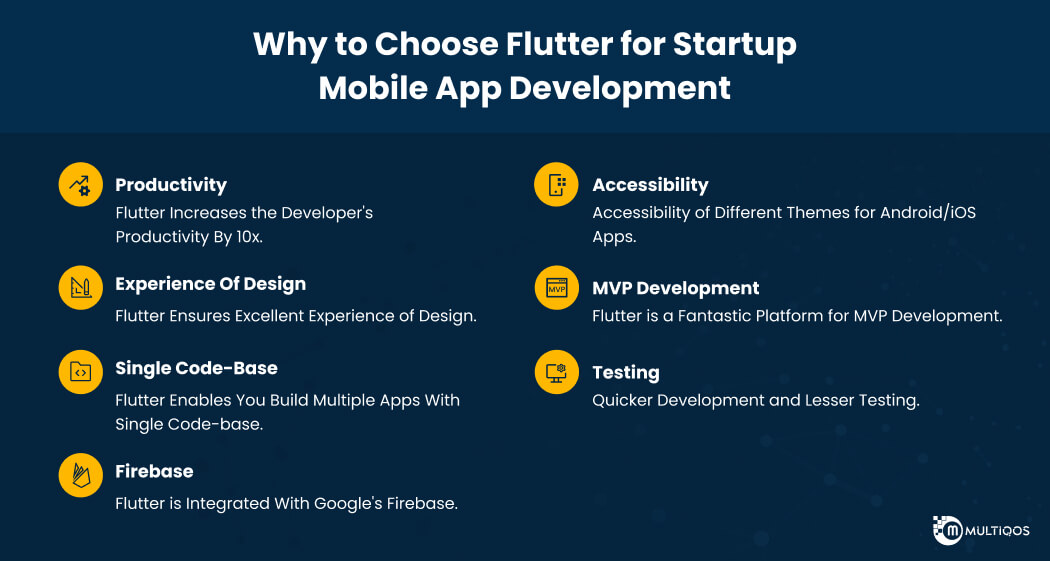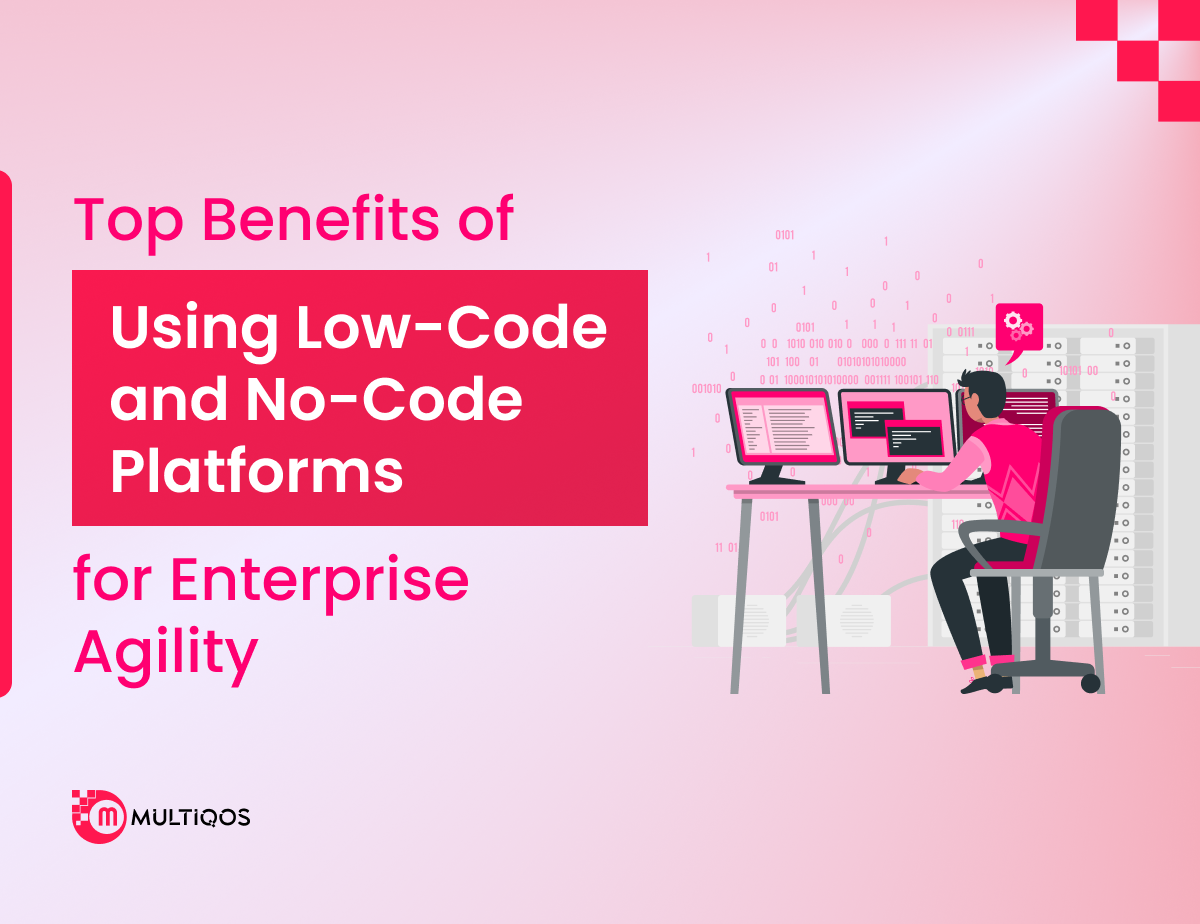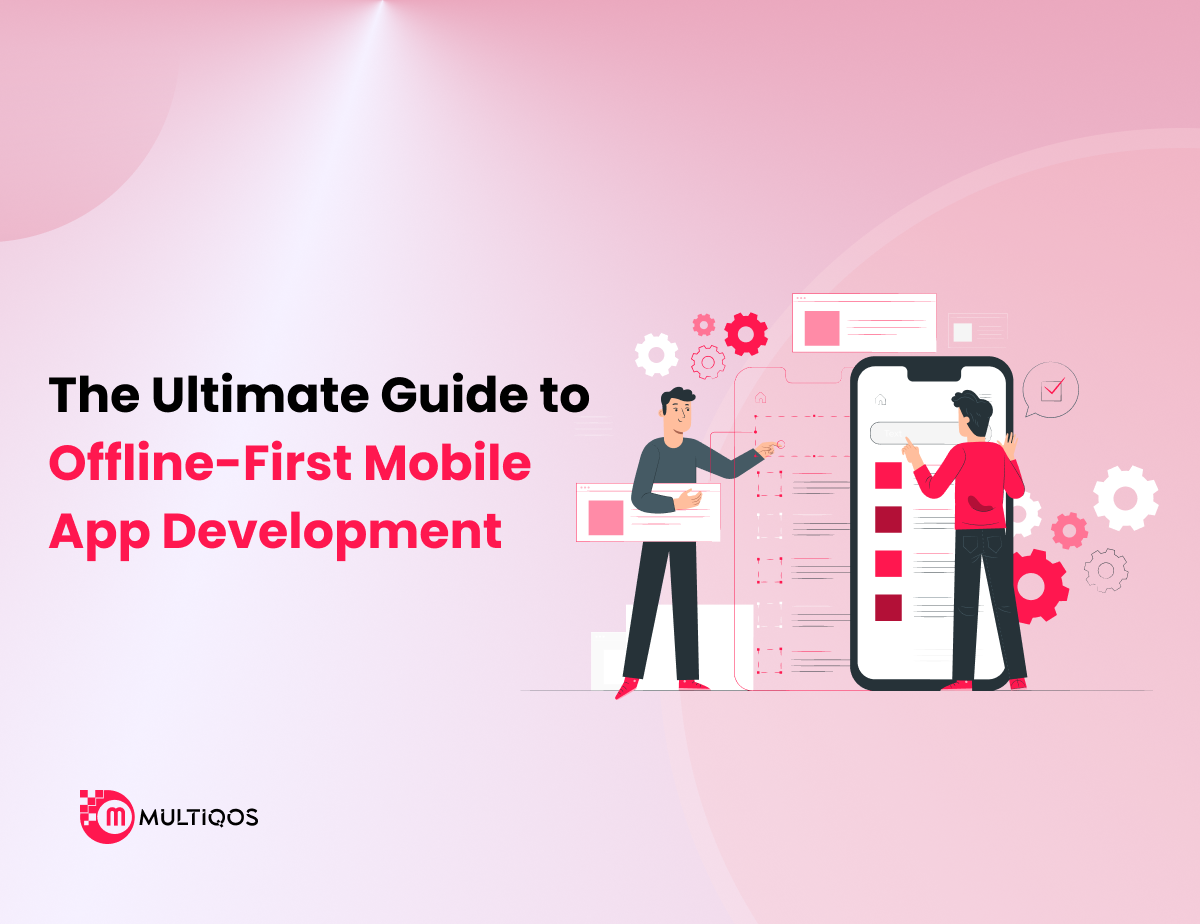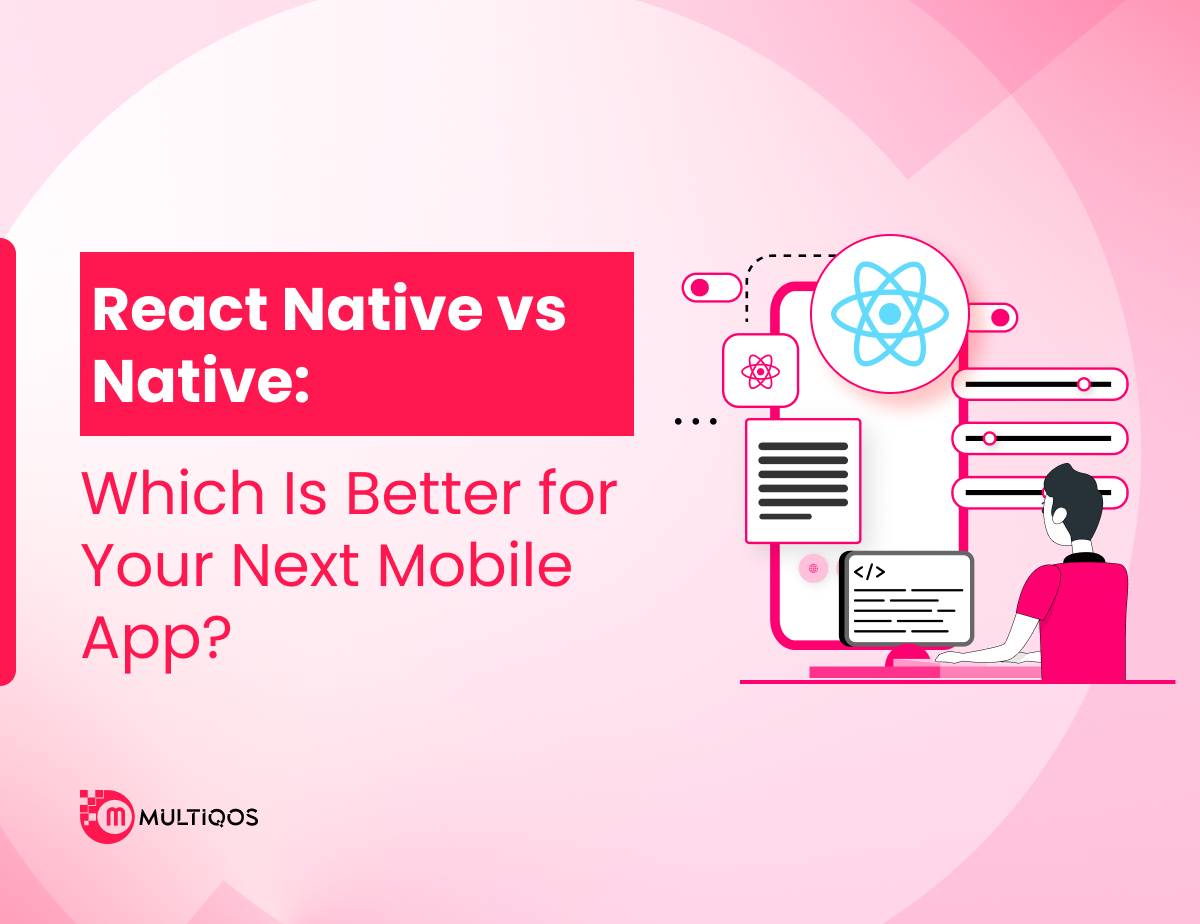Why Startups Should Consider Flutter for Cross-Platform App Development in 2025?
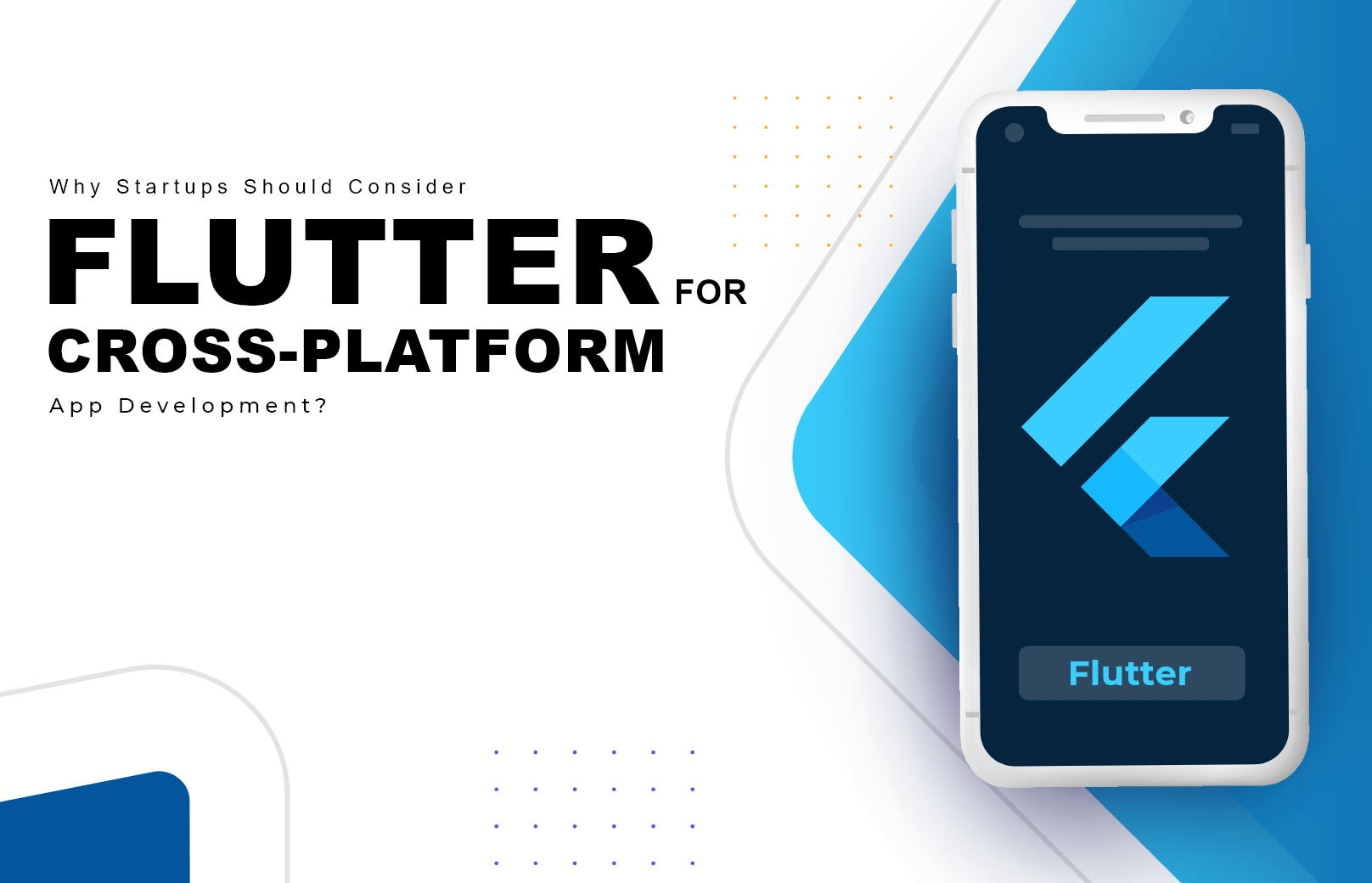
Table of Contents
- Introduction
- Why Should Startups Use Flutter to Build Mobile Apps?
- Fundamental Understanding of Flutter and Its Background
- Motivation to Choose Flutter for Startup Mobile App Development
- Why Is It a Good Idea for Startups to Develop a Cross-Platform App Using Flutter?
- The Amount Does It Cost to Develop a Cross-Platform App with Flutter?
- Pros and Cons of Flutter
- Conclusion
- FAQ
Introduction
The reason for this is that no matter how well-planned and produced your services and products are, they are useless if you don’t have any customers. The facts clearly show that to turn a startup into a six-figure business, and people must focus heavily on improving the quality of the product and services. Nonetheless, they overlook the significance of selecting a reliable platform for clients to approach your administrations or products effortlessly. What’s more, in this digital age, what’s better than a mobile app that sees rapid spikes in demand across several platforms?
Gone are the days when software firms thought of dedicated mobile app developers as an unnecessary expense that would deplete their budget. Mobile devices now account for 70% of all sales, with rehash customers accounting for 57 percent of purchases. Furthermore, this sliver of progress will swiftly fill up in the future.
Why Should Startups Use Flutter to Build Mobile Apps?
When it comes to mobile app development companies in India, each firm must choose between local or cross-platform mobile applications. Because there are over 5 million apps available on the Google Play Store and the Apple Program Store, depending on a single functioning framework to distribute your app will not be a wise decision. Furthermore, developing a local Android and iOS app might be a costly endeavor. So the most basic and cost-effective solution for entrepreneurs is to invest in cross-platform applications that may help you reach your target audience via many platforms.
However, if you are unfamiliar with Flutter and why it has become so well-known in the mobile app development business, we should go through a quick rundown of the vital outline of Flutter.
Fundamental Understanding of Flutter and Its Background
Flutter is an open-source mobile SDK (Software Development Kit) that allows developers to create Android and iOS apps with a single code base.
Not only that, but because Flutter is a Google UI toolkit, the engineers will have no trouble creating an expressive and adaptive app focused on local end-client experience.
It was despatched by Google and is still considered a juvenile structure due to its in-house programming language “Dart.” Despite these facts, Flutter is being used by many industry giants, like Alibaba, Hamilton Music, Tencent, and others, to create their products.
Flutter’s dominance has also been overshadowed by the restricted ability to devote time, leaving behind some of the most impressive, fruitful, and driving innovations such as Xamarin, Ionic, Unity, PhoneGap, and others. Furthermore, how Flutter is quickly approaching React Native’s position, most agree that it has an exceptionally bright future in mobile app developers.
Motivation to Choose Flutter for Startup Mobile App Development
With well-known apparatuses and systems available, such as React Native, Ionic, and Xamarin for cross-platform app development, why should startups choose Flutter? What’s so refreshing with regard to flutter? Will it help startups in arriving at business objectives?
Flutter Increases the Developer’s Productivity By 10x
However, whether you’re a startup or a business owner, there’s one thing that all of us are concerned about: money. In addition, time is money in app development. The longer your app development takes, the more expensive it will be.
In any case, if startups use Flutter mobile app development companies, they can save a lot of money on app development. Flutter includes a stateful “Hot Reload” feature that allows designers to make real-time changes to the back end without recompiling the app, which reduces the time it takes to develop a mobile app.
This is one of Flutter’s most prominent but well-known features, which allows engineers to see the effects of code changes they make. Engineers can make gradual adjustments by employing the Hot Reload feature.
Flutter Ensures Excellent Experience of Design
Material Design with Flutter has created an excellent system that ensures an exceptional customer experience. Flutter also considers amazing Android and iOS power-packed devices that provide a localized mobile app experience.
Flutter’s gadget list includes a diverse range of cross-platform tools that can be used not just for views but also for the entire screen and, in any case, for the app itself. Designers can easily create a seamless and new app using Flutter’s gadget, providing clients with a fantastic app experience.
Flutter Enables You Build Multiple Apps With Single Code-base
Whether you’re releasing your app on the Google Play Store, the App Store, or both, Flutter lets you create useful apps with a single code base that operates on many platforms. You don’t need to hire mobile app experts with a wide range of skills to refresh your app concept on numerous platforms. On the other hand, Flutter is a clever way to create apps for various platforms without jeopardizing the app’s integrity.
Flutter is Integrated With Google’s Firebase
To put it just, Firebase is Google’s mobile platform that brings together all significant sorts of assistance. Such as distributed storage, cloud capacities, continuous information bases, facilitation, and more in one place, making the app development process far more straightforward and faster.
Similarly, startups can make a request. Startups may make their app framework serverless, repeatable, and versatile by using Google’s Firebase. In most cases, designers must assemble a few devices for back-end support when developing an app; however, if engineers consolidate the Firebase with various apparatuses, they will automate the app development process.
Accessibility of Different Themes for Android/iOS Apps
While it’s true that Flutter can help you develop several apps with a single code base, imagine a situation where you require different themes for different apps.
Relax, Flutter has a unique collection of subjects for diverse applications to ensure a fantastic client experience across various platforms.
Flutter is a Fantastic Platform for MVP Development
If you’re a startup with a limited budget and the cost of cross-platform app development prevents you from entering the mobile app market, Flutter will be your best option. It can help you develop a mobile app gradually with little difficulty, even if you have limited resources, a limited budget, and a limited amount of time.
Flutter by Google considers a variety of UI Native app development, a Hot Reload feature, and support for 2D GPU accelerated APIs, making it all the more appealing.
Also Read: Flutter VS Xamarin VS React Native: What’s Best in 2023?
Quicker Development and Lesser Testing
Flutter mobile app development company can reuse the app codes, which means they must translate them into different programming languages rather than writing without any preparation. As a result, it saves time and effort while writing programs for numerous apps. When codes are noted, they can be used with various modules, which reduces development time.
Furthermore, when it comes to app Quality Assurance, a single thorough QA is sufficient to test the features, capabilities, and projects of the Flutter-based cross-platform app development.
Why Is It a Good Idea for Startups to Develop a Cross-Platform App Using Flutter?
Here are some extra consideration focuses that make Flutter stand separated over different systems:
- Startups don’t have to worry about spending money because Flutter is a free and open-source platform, which means they won’t have to pay any license costs.
- It provides a one-stop shop for everything from development to sending.
- Engineers can use internationalized flutter libraries to limit the application to a specific location based on the language, text, and preferred format.
- You’ll save money on development because you won’t have to donate to each platform separately.
- Many modules are accessible, making development interaction much more straightforward, faster, and smoother.
- Flutter is also straightforward to understand and code because of the detailed documentation to clients.
The Amount Does It Cost to Develop a Cross-Platform App with Flutter?
We assume you’ve finally made up your mind to design an app with Flutter, but your next question is almost certainly “How much does it cost to make an app?”
Various programming development firms can provide you with the best estimate of app development costs ranging from $10,000 to $50,000. In any event, if you’re looking at the expense of developing a clone for a fraction of the most popular apps, such as TikTok, Facebook, Whatsapp, Talabat, Uber Eats, and others, the development cost will be significantly higher than these figures.
Various expense-related aspects, such as app complexity, development team, features and usefulness, platform selection, and more, contribute to the app’s cost.
It isn’t necessary to invest a large sum of money in developing an app with the latest features and a complicated design as a startup. Indeed, you may construct a local app with a flutter for a single platform at the start, and then as your business grows and your client base expands, you can extend your app in the same way.
Furthermore, Flutter has an active and growing community where you can connect with experts to learn about new gadgets and modules that will help you keep your app up to date with the latest features. On the other side, you can Hire a Flutter App developer to help you with your project.
Pros and Cons of Flutter
Before considering Flutter to foster your business apps, view its pros and cons.
Pros of Flutter
Flutter enjoys many benefits that draw in app engineers to choose this structure just as entrepreneurs do. Here is a portion of the significant advantages of Flutter:
Creating Android and iOS Apps Simultaneously.
A similar code base is utilized in Android and iOS apps fabricated utilizing Flutter. Therefore, it isn’t essential to foster a specific framework and afterward rehash a similar system for the other.
Apps created utilizing Flutter are similarly powerful on both Google and Apple platforms. The cycle requires less coding during development, and business firms can dispatch the apps on both platforms.
Quicker Prototyping
The hot reload component of Flutter is one of the central angles, which persuades the designers. Utilizing this element, they can continuously see any change made to the code. They need not restart the app.
The source code, which is refreshed, can be infused into the app under a running condition.
Flutter naturally works the gadget tree to appear to progress continuously. The advantage of a hot reload is that the interaction turns drastically quicker. The exchange is improved, and the designers can recognize the bugs no sooner than they appear. Ultimately, they can test the new features or UI with no issues.
Lesser Coding
The Dart programming language utilized in Flutter app development is specifically situated in nature. In Flutter, the programming style is explanatory and responsive. The JavaScript span isn’t required in Flutter, which upgrades the app’s general performance and startup season.
The AOT (Ahead-of-Time) accumulation makes it workable for Dart to accomplish this. Dart likewise utilizes the JIT (Just-in-Time) assemblage that improves the development work process, allowing the hot reload element to get the UI invigorated during the development interaction. Therefore, it isn’t essential to fabricate it from scratch.
Good for MVP
Now and again, business firms need to grandstand their items to financial backers in a brief time frame. In these circumstances, a Flutter mobile app can fill the need. On both Android and iOS platforms, the apps look local.
This will enable the financial backers to gain a superior thought on the last look of the MVP. It costs more cash and sets aside undeniably more effort to foster two separate apps. It can improve the productivity of your business.
Also Read: Flutter for Web: a Complete Guide to Build Web App in 2023
Cons of Flutter
The Flutter system is nearly youthful, and it will, in any case, be creating. The tool compartment accompanies specific blemishes, as introduced here:
Impediments in Libraries
Even though Flutter offers a few essential libraries, the system is still relatively new. You are unlikely to notice all of the features that you desire.
Contrary to popular belief, local apps come with all of the functionality in their SDKs. Twilio, Stripe, and services like UStream and Wowza are among them. Engineers who use Flutter must maintain these libraries, which is time-consuming.
App Dimensions
The apps produced using Flutter are more significant than 4 MB in size. Even though the Google team is striving to reduce the size, this could concern specialized businesses looking for small-scale apps. The built-in gadgets in Flutter applications increase their size.
Temperamental Instrument
Flutter is a different device with its own set of quirks. Designers are having new concerns, similar to the inability to adapt to Android and iOS user interfaces. Furthermore, a few designers have ensured that Flutter should be overhauled to deal with substantial eCommerce applications.
Conclusion
To wrap up this essay, it’s worth noting that Flutter’s current, as mentioned above, and modern qualities make it an excellent choice for startups or any business visionary looking for an app that’s well-planned and capable of meeting future client demands.
It has everything a startup could want, from faster development to lower development costs. While working with Flutter is simple, you can get help from a mobile app development company in the USA, if you get stuck somewhere during this post.
Dart, Flutter’s execution language, is probably its biggest flaw. If you’re using Google’s web or back-end enabling conditions, Dart is one of the dialects you can use. Furthermore, that is essentially it. It requires numerous traits found in other contemporary languages.
Let’s Create Big Stories Together
Mobile is in our nerves. We don’t just build apps, we create brand. Choosing us will be your best decision.
FAQ on Flutter for Cross-Platform Apps?
Flutter is currently one of the most impressive cross-platform app development breakthroughs available. Because it’s close to local dialects, has fantastic performance, and has a plethora of off-the-shelf arrangements, it’s simple for both a local and cross-platform mobile app designer to master.
Flutter is widely regarded as the most excellent tool for developing cross-platform mobile apps. Google is the one who created and maintained it. Flutter makes stunning cross-platform apps with Dart and a variety of local gadgets.
Flutter, on the other hand, isn’t a programming language. It is a software development kit (SDK) that comprises prewritten code, ready-to-use and customizable gadgets, libraries, devices, and documentation, all of which work together to create a cross-platform application.
Dart, Flutter’s execution language, is probably its biggest flaw. If you’re using Google’s web or back-end enabling conditions, Dart is one of the dialects you can use. Furthermore, that is essentially it. It requires numerous traits found in other contemporary languages.
Get In Touch

